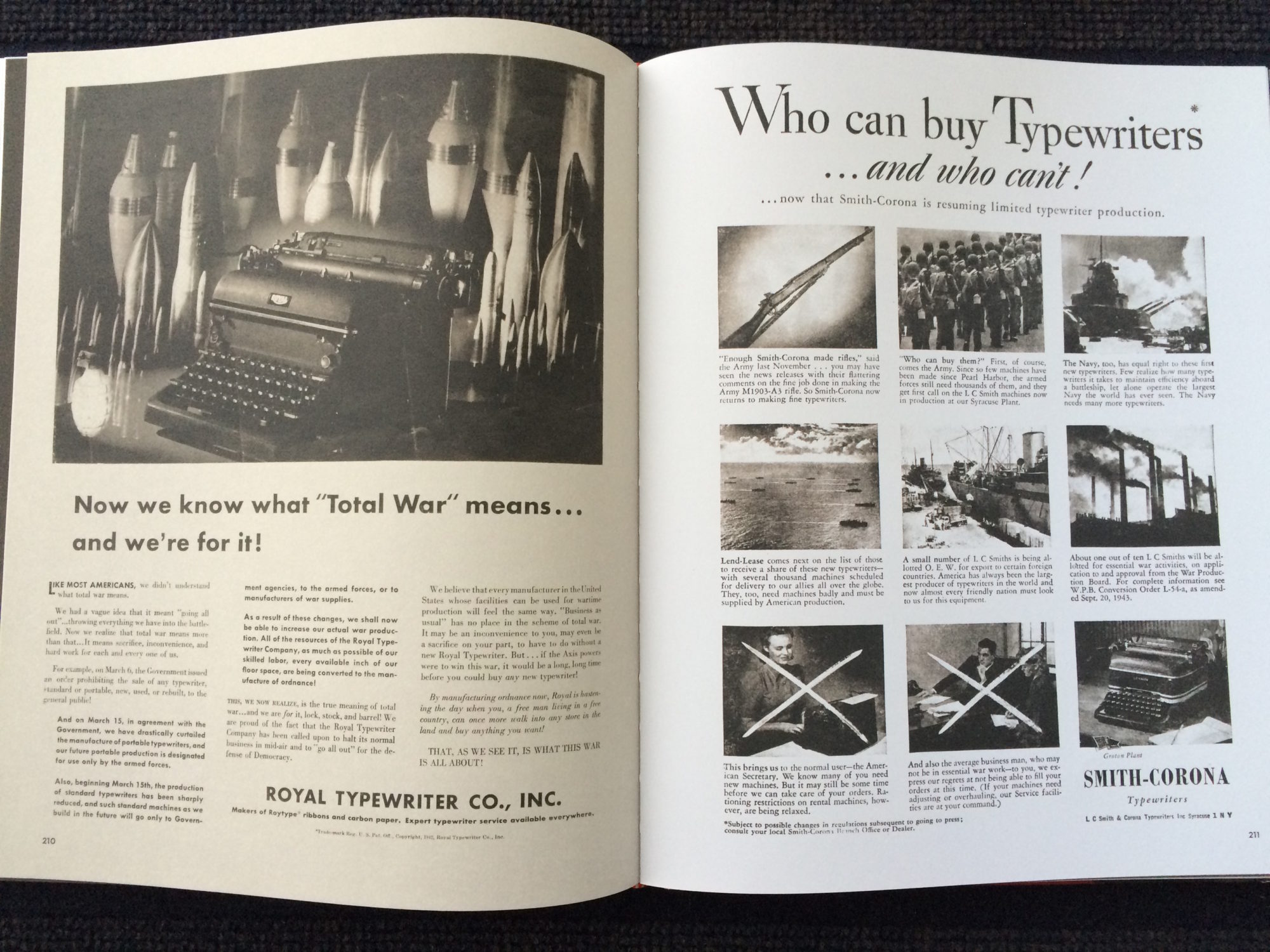
Janine Vongool’s The Typewriter: A Graphic History of the Beloved Machine is a gorgeous compendium of ads, photographs, and other artwork depicting typewriters and related ephemera from their invention in the late 1860s to the 1980s, when personal computers began to supersede their analog ancestors.
In other words: straight-up typewriter porn.
Some interesting tidbits:
The Name
Charles Weller, a clerk who witnessed the early development of the machine, talked years later about how the typewriter got its name: “Typewriter was an unusual name and had a unique sound, and so it was finally adopted, and then for the first time was heard a name, sounding oddly enough at that time, but which has now become so common throughout the civilized world that we wonder that any other name was thought of.” Other names like “writing machine” and “printing machine” didn’t quite fit, and in retrospect were clearly inferior choices to typewriter, which indeed is an unusual but perfectly apt name.
The War
Typewriters were recruited to the World War II effort just as other industries and product were. The Royal ad below: “Uncle Sam wants every typewriter you can spare because the fighting forces need typewriters desperately today. They’re needed to speed up production, the movement of supplies, orders to ships and planes and troops. The typewriter industry can’t supply ’em – we’re busy making ordnance.” Manufacturers implored customers to either sell theirs to the government or maintain them better, as supplies and repairmen would be at a deficit due to war production.

A Secretary Is Not A Toy
Sex and sexism are common themes throughout the decades of typewriter advertising shown in this book. Early 20th century graphics often depicted the office secretary as the “temptress at work” or an idle daydreamer, with the word typewriter “often used to describe both the machine and its operator.” The ads above make winking reference to these assumptions with the bait-and-switch headline that’s actually just selling carbon copy paper. The ads below promoted using bright red fingernail polish to contrast with the style of the machine; in a brilliant move of synergy, Underwood even made its own “chip-resistant” polish secretaries could sample by writing in on their office stationery.


Typewriters and Self-Worth
Showing us that some things never change, some mid-century ads promoted typewriters to young people as statements of social standing, self-improvement, and self-worth. One Corona ad from 1921 just comes right out with it: “You probably suspect that we are trying to sell you a Corona. Nothing of the sort. We are just trying to convince you that you need a Corona. That’s different.” Royal really hit the self-improvement theme hard, promising a 38% rise in grades due to all the “exclusives” the 1958 Royal Portable provided.

While I would have appreciated more contextual information accompanying the artwork, Vangool mostly lets the many images speak for themselves. Overall, it’s a superbly made coffee-table book that fans of typewriters and the graphic arts especially will enjoy.

Reply